We have put together a detailed overview of things to do in Nikko, to help you plan your visit. While a popular option is to do a day trip to Nikko from Tokyo, if you have time, we recommend that you plan to spend at least 2-3 days exploring the area.
You may not realise that in addition to the main Nikko township and Nikko National Park, there are other Nikko attractions to explore in Lake Chuzenji and Kinugawa Onsen areas. In the article below, we detail places to visit in the Nikko region.
Join the Japan Travel Planning Facebook Group or Discord Server
You are also welcome to join our Japan Travel Planning Facebook Group and our Japan Travel Planning Discord Server – they are great resources to enable you to ask questions about your upcoming trip to Japan!
Disclaimer: This article contains affiliate links. If you book after clicking on one of these links then we may receive a small commission at no extra cost to you.
Map of Nikko Japan
Below is our map of Nikko, showing the three major areas in the Nikko Region and the attractions in each location. Nikko township is in the middle, with Lake Chuzenji to the west and Kinugawa Onsen to the east. You can click on the map to zoom in without leaving this page.
How to Get from Tokyo to Nikko
There several options to travel from Tokyo to Nikko as follows:
- Catch the shinkansen from Tokyo Station to Utsunomiya Station, and then transfer to the JR Nikko Line to Nikko Station. This journey will take approximately 1:45 hours, and is included in your JR Pass or you can purchase the specific tickets. You can then purchase the Digital Nikko Pass from Klook, which will provide all of your transport around Nikko over either a 2 day (World Heritage Area only) or 4 day (All Areas) period. Click here to check out and book your instant confirmation Digital Nikko Pass through Klook.
- Catch the JR Nikko Limited Express train direct from Shinjuku Station to Nikko Station. This journey will take approximately 2 hours, and is included in your JR Pass, or you can purchase a ticket. Make sure you check the timing for the direct services, as they only run periodically each day. You can then purchase the Digital Nikko Pass from Klook, which will provide all of your transport around Nikko over either a 2 day (World Heritage Area only) or 4 day (All Areas) period. Click here to check out and book your instant confirmation Digital Nikko Pass through Klook.
- Catch the Tobu Line Limited Express Train from Asakusa Station (Tobu Line) in Tokyo direct to Nikko Station. This journey will take approximately 1:50 hours, and is not covered by your Japan Rail Pass. The direct service operates regularly throughout each day. You can purchase the Physical Ticket Nikko Pass for collection at Asakusa Station, which includes both the 2 Day (World Heritage Area only) or 4 day (All Areas), and includes return tickets from Asakusa to Nikko Station through Klook. Click here to check out and book your instant confirmation Physical Nikko Pass through Klook.
- Alternatively, there are several day tour options to visit Nikko, which include bus transfer and make it easy to get around. The tour options depart from and return to Shinjuku in Tokyo. Click here to check out and book your Nikko Day Tour options through Klook.
How to Get Around Nikko
After you arrive at Nikko Station (either the JR or Tobu Station, which are within walking distance apart), to explore the area, the main option is by Tobu bus. You can also catch a train to Kinugawa Onsen and nearby attractions, however, there are also Tobu bus options to get around.
The most cost-effective option to get around is to purchase a Nikko Pass, however, be aware that you can also use your Suica or Pasmo card or equivalent to tap on and off the buses and local trains.
Where to Stay in Nikko
We definitely recommend that you plan to stay in the Nikko region for 1-2 nights to enable you to have enough time to fully explore the region. We personally stayed in both Kinugawa Onsen and Lake Chuzenji, however, there are also many options to stay in Nikko township as well.
Click here to check out the accommodation options available through Booking.com for Nikko township, Kinugawa Onsen and Lake Chuzenji. You can also enter your planned travel dates into the Booking.com map below to quickly see the options.
Booking.comNikko
The township of Nikko is host to a number of historical attractions in Nikko National Park, and you could easily spend a half-day exploring this part of Nikko. Just some of the attractions that are definitely worth a visit include Shinkyo Bridge, Rinnoji Temple, Toshogu Shrine and Futarasan Shrine.
Shinkyo Bridge
Shinkyo Bridge is a sacred bridge at the entrance to Nikko’s temple and shrine complex. It is considered to be one of the three finest bridges in all of Japan. The bridge was built in its current form in 1636. Unfortunately, it was destroyed by flood in 1902 and so was rebuilt in 1904. Historically, the bridge could only be used by the Emperor, a small number of generals and imperial messengers.
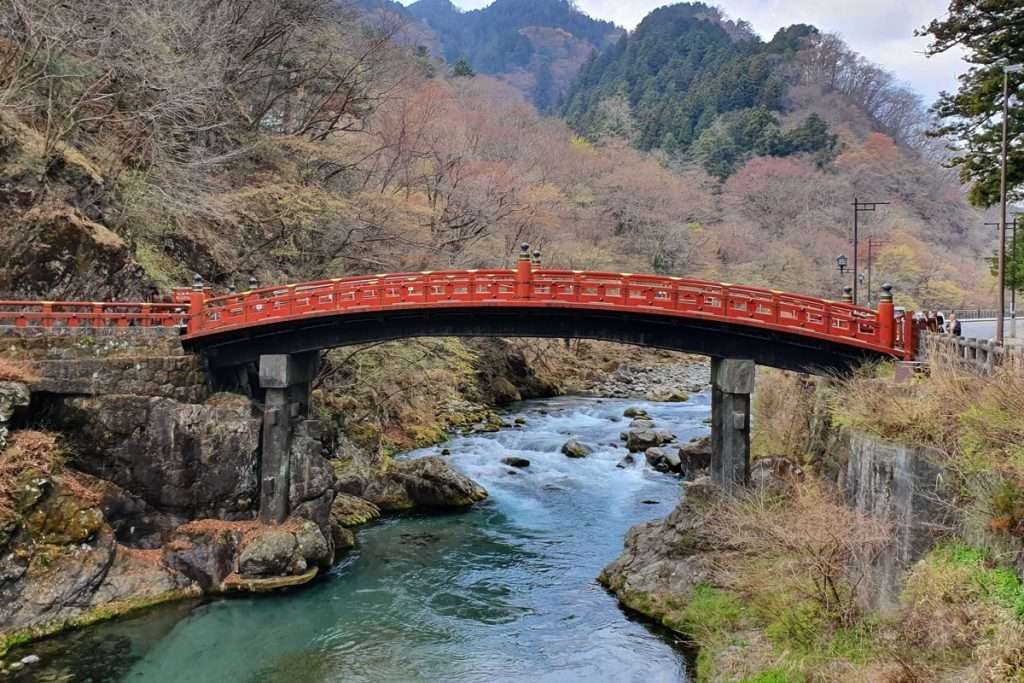
Rinnoji Temple
Rinnoji Temple is Nikko’s most important temple. It was founded in the 8th Century by Shodo Shonin, who introduced Buddhism to Nikko. When we visited, a decade-long renovation of the main building, the Sanbutsudo, was coming to an end, and you could still see evidence of the renovation.
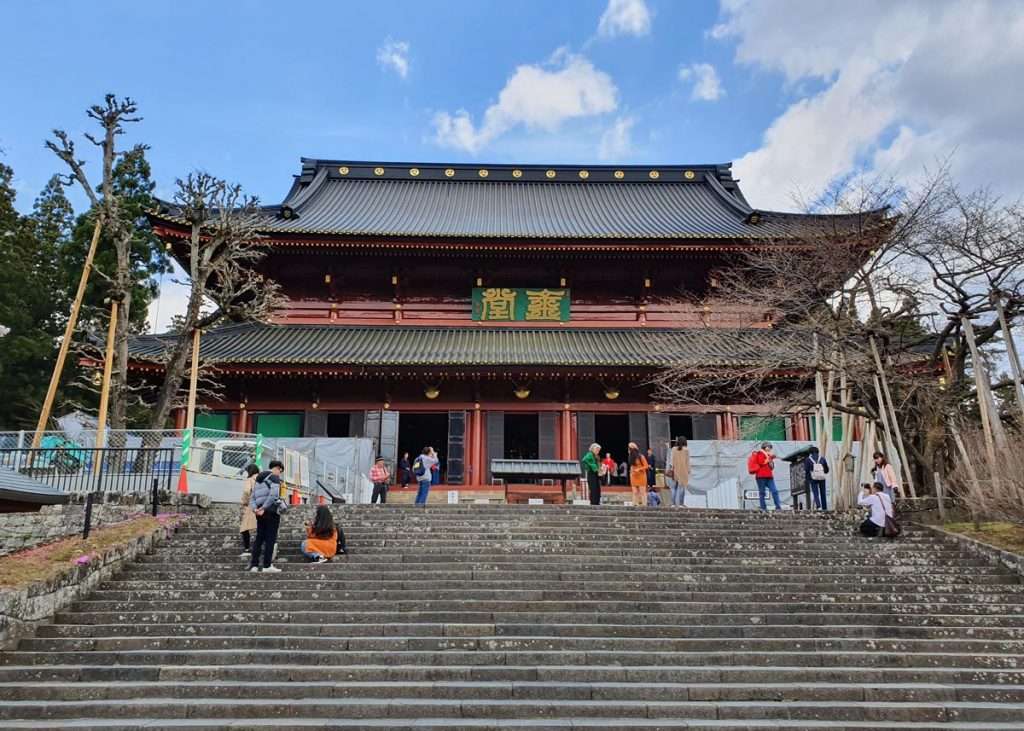
Toshogu Shrine
Toshogu Shrine is the final resting place of Tokugawa Ieyasu, who founded the Tokugawa Shogunate, which ruled Japan for over 250 years from the early 1600s until 1868. The complex consists of over a dozen buildings, including a five-storey pagoda and features intricate and exquisite wood carvings and gold leaf.
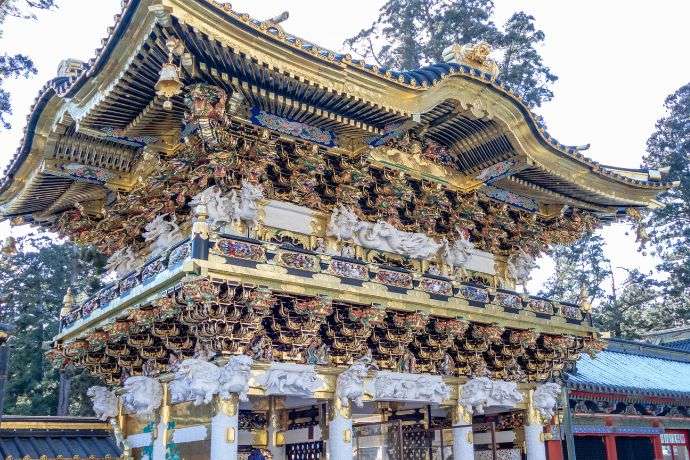
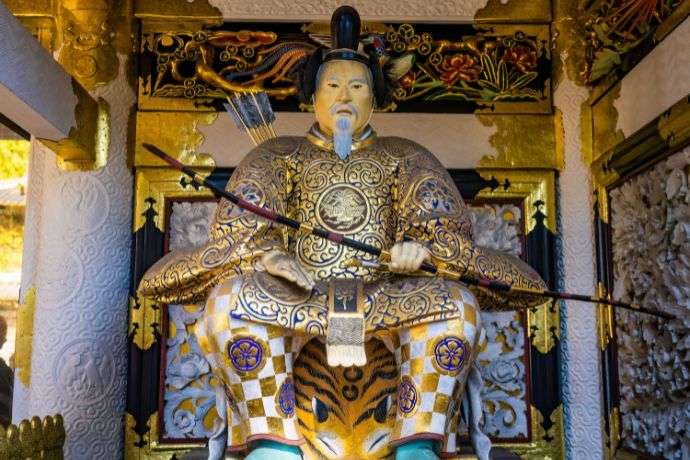
Make sure you visit the storehouses, which feature multiple carvings of Nikko’s famous three wise monkeys (see no evil, speak no evil, hear no evil).
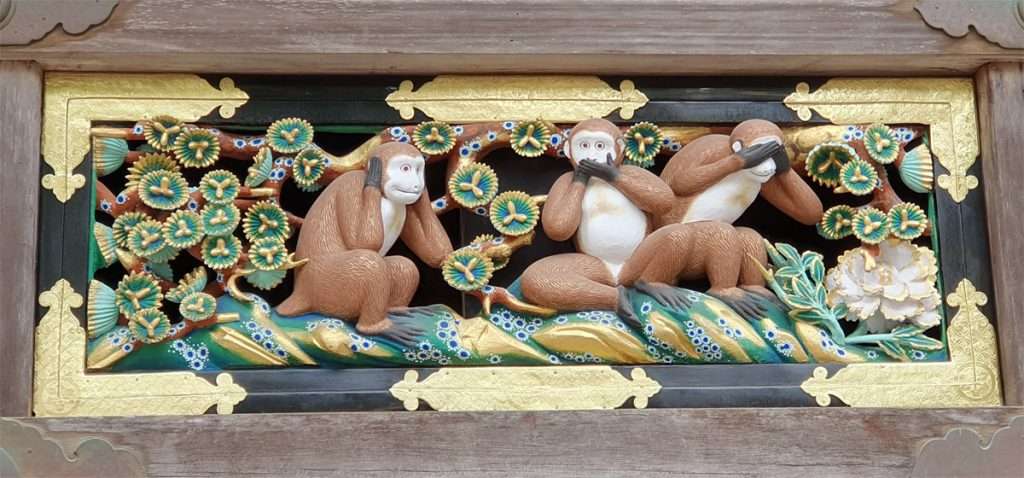
I would also highly recommend visiting the Nikko Toshugu Museum, which is located just a short walk from the entrance to Toshogu Shrine. It is quite a small museum, but it holds many beautiful artefacts, and it helps give a real appreciation of the historical importance of Tokugawa Ieyasu prior to visiting his shrine. The cafe in the museum was also a good place to rest and refuel prior to visiting the shrine.
Futarasan Shrine
Futarasan Shrine is near Toshogu Shrine. It was founded in the 8th Century by Shodo Shonin, who also founded Rinnoji Temple. The shrine is dedicated to the deities of Nikko’s three most sacred mountains. The spring water and sacred tree in the complex are popular as they are believed to give good luck.
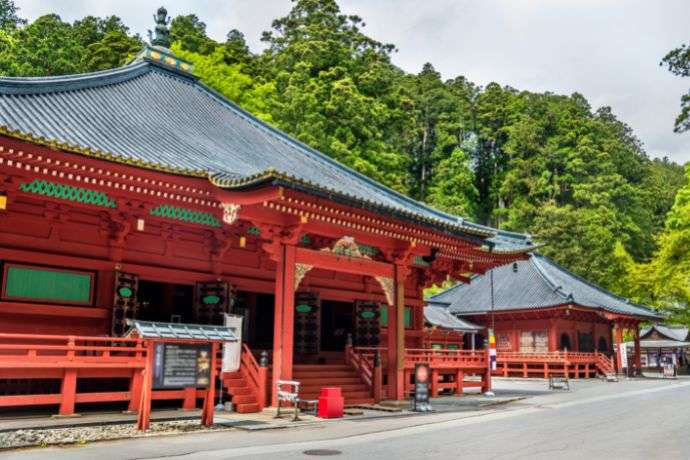
Kanaya History House
Kanaya History House (or ‘Samurai House’) is located 1.1km west of Shinkyo Bridge. Kanaya History House was originally a Samurai warrior residence, which was subsequently transformed in 1873 into one of the first lodgings in Japan for foreign guests. The famous British explorer Isabella Bird stayed there in 1878. She subsequently wrote about it in her travelogue ‘Unbeaten Tracks in Japan’, and the room she stayed in has been preserved in the museum.
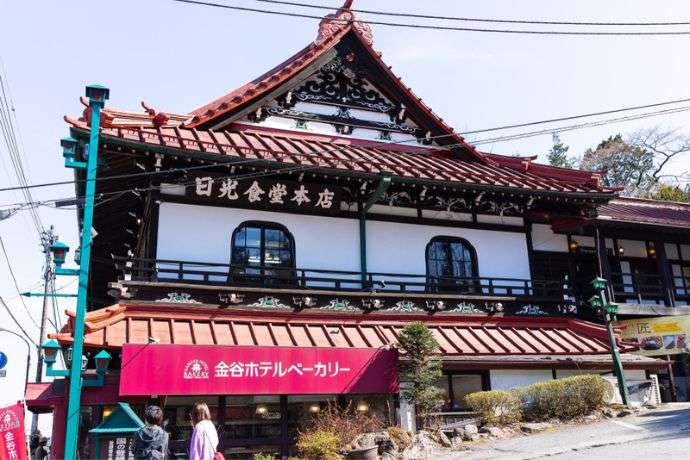
Lake Chuzenji
Within a short walk of Kai Nikko are Chuzenji Temple, Lake Chuzenji, and Kegon Falls. We would also suggest a walk through the township of Lake Chuzenji which has a nice mix of shops.
Chuzenji Temple
I would thoroughly suggest a visit to Chuzenji Temple if you have the time. It is a smaller complex built in 784 AD and, from our experience, has far fewer tourists than the temples and shrines in Nikko.

Lake Chuzenji Boat Cruise
Another option to consider if you have the time is a cruise on Lake Chuzenji. Boat cruises depart every 60 minutes on the half-hour (e.g. 9:30 am, 10:30 am) from Funenoeki in the township of Lake Chuzenji. The cruise takes about 55 minutes to circumnavigate the lake. The cruise stops at two piers – one near Ryuzu Falls (which can also be visited by bus) and the other pier near Chuzenji Temple – before returning to Funenoeki. The boat cruise is included in your Nikko Pass.
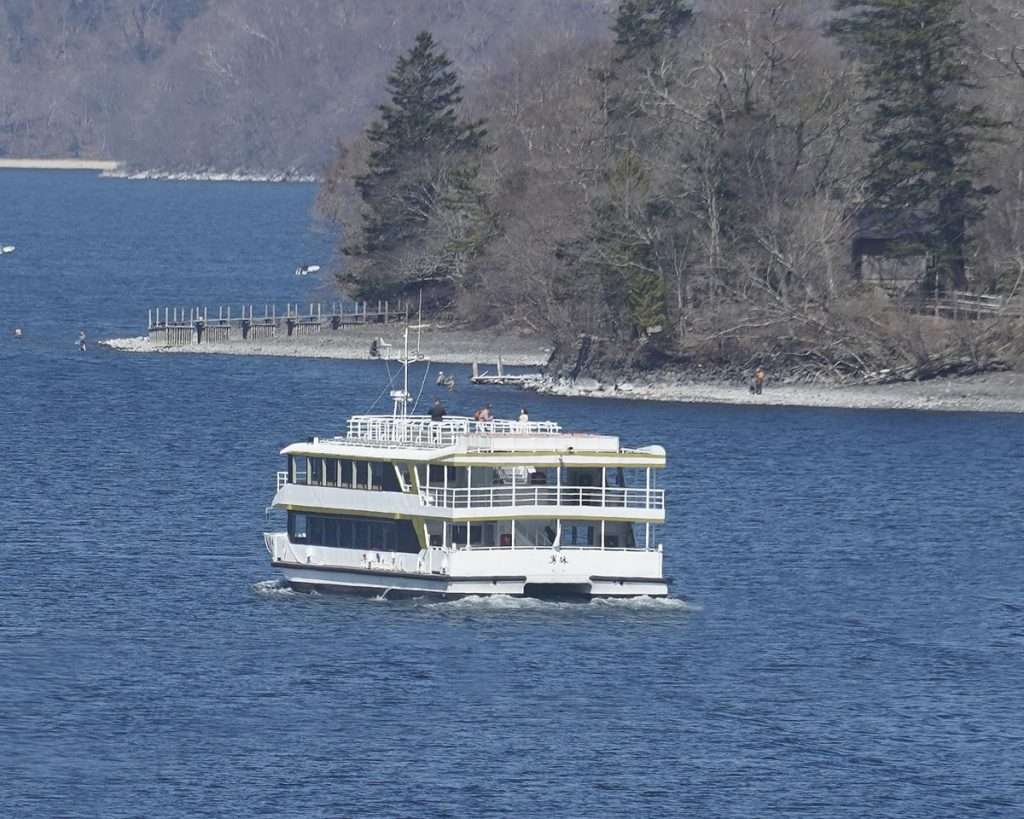
Kegon Falls
Kegon Waterfall is almost 100 metres tall and is the most famous waterfall in Nikko. It is ranked as one of the three great waterfalls of Japan. It can be viewed from either a free observation platform at the top of the falls, or you can use a paid elevator which takes you down 100 metres to a second platform. I feel that the view of the fall is better from the lower, paid platform.
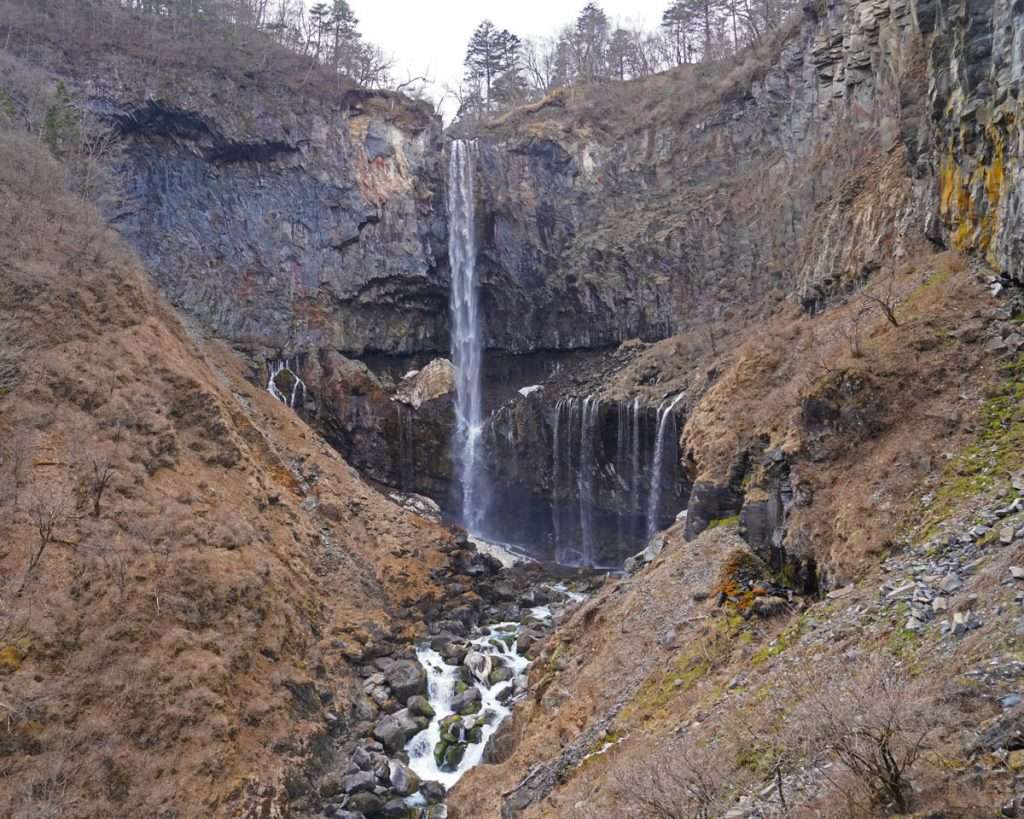
As I mentioned earlier, it is also definitely worth sampling some of the food options available from the food stalls at the top of Kegon Falls.
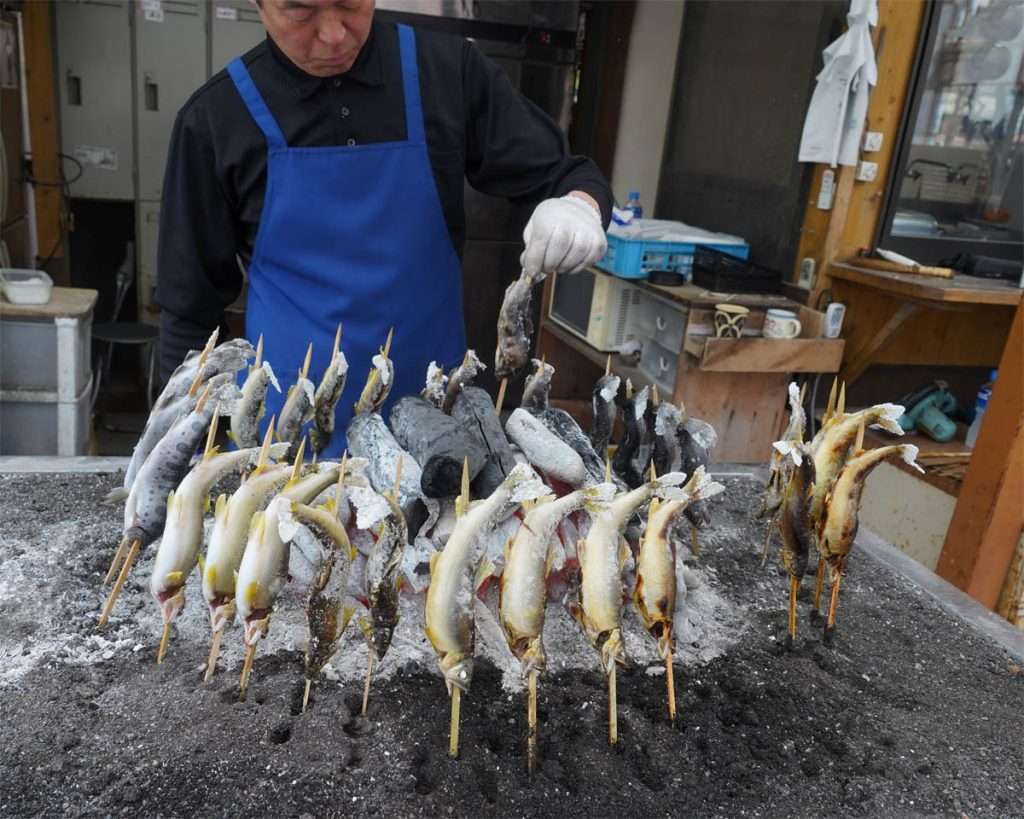
Ryuzu Falls
Another waterfall worth visiting near Lake Chuzenji is Ryuzu Falls to the northwest of the township of Lake Chuzenji. It’s approximately 20 minutes by Tobu Bus from the bus stop near Chuzenji Temple. It’s quite small (at least compared to Kegon Falls), but beautiful waterfall. It takes its name from its resemblance to a dragon’s head – ‘ryu’ means dragon, and ‘zu’ means head.
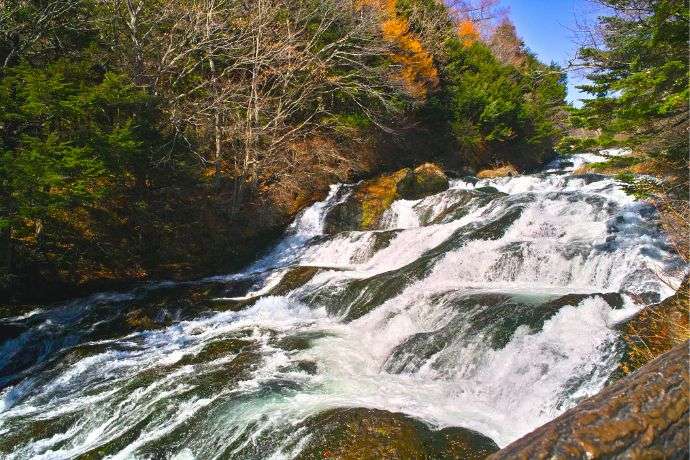
Senjogahara Wetland
Another popular place to visit near Lake Chuzenji, particularly for hikers, is Senjogahara Wetland (also known as Senjogahara Marshland). It is located about 10 minutes by bus beyond Ryuzu Falls. It’s a huge wetland of about 400 hectares with a mountain backdrop and is full of plants (including native wildflowers in late Spring and Summer) and birds. It takes about two to three hours to hike the total trail around the wetland.
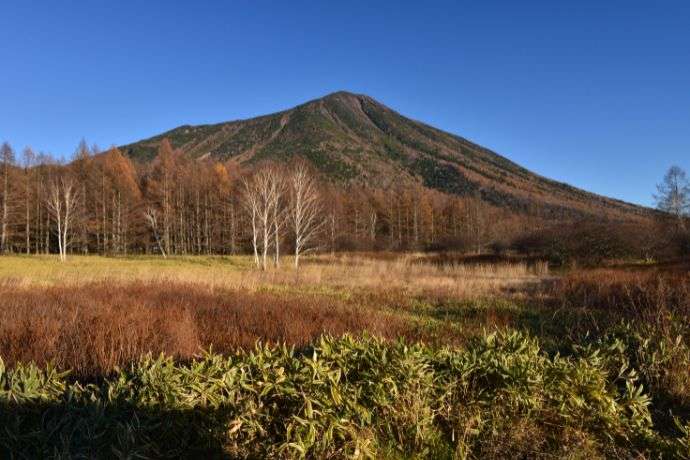
Akechidaira Ropeway
Heading back towards Nikko on the Irohazaka Winding Road is Akechidaira Ropeway, which is about 10 minutes from the bus stop near Chuzenji Temple. The ropeway takes about three minutes to get from Akechidaira to the Akechidaira Plateau observatory.
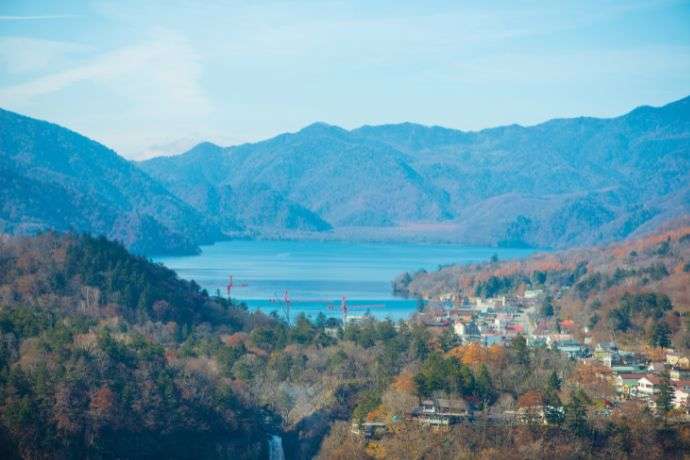
The Akechidaira Ropeway offers a fantastic view of Lake Chuzenji and Kegon Falls and the Irohazaka Winding Road.
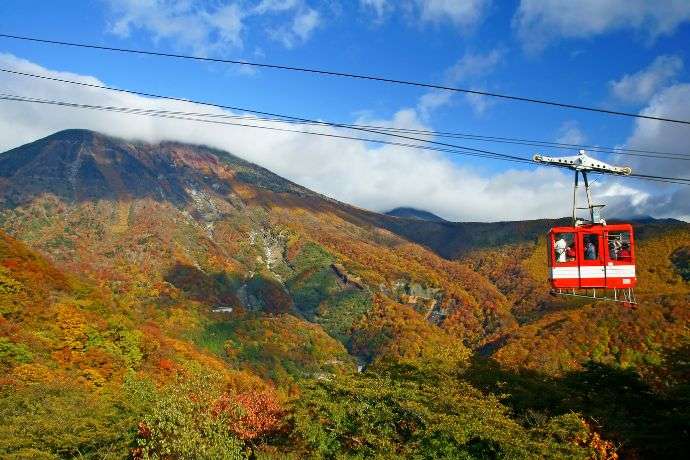
Kinugawa Onsen
Kinugawa Onsen is a township north east of Nikko township, which is famous for its onsen hot springs. There are many hotels around the main township area, each with its own onsen baths for guests, noting some do offer access for day visitors. There are also public onsen baths for visitors.
Kinugawa Onsen Koen Iwaburo is public onsen bath with lovely stone lined outdoor baths, and is a short walk from Kinugawa Koen Station.
Note that if you plan to stay overnight, book a plan with dinner included, as there are limited restaurant options available in the township. We stayed at KAI Kinugawa Onsen which was an amazing modern ryokan. you can check out our detailed review of KAI Kinugawa Onsen at this link.
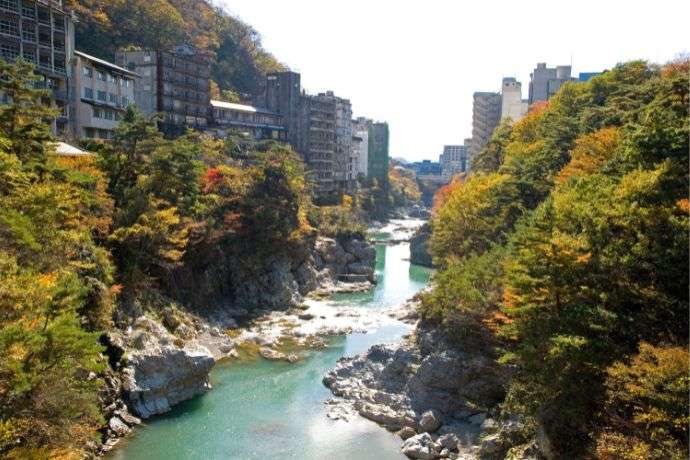
Kinugawa River Boat
From mid-April to late November each year, a great activity is to do a Kinugawa River Boat Cruise along the river in a traditional Japanese boat. The starting point is a short walk from Kinugawa Onsen Station. The route is reasonably gentle water for the 40 minute cruise and is great fun! Your ticket includes a one-way shuttle bus to return to the starting point.
Here is the link with more details about the Kinugawa River Boat Cruise timetable and how to book. Note that you can also purchase a combination ticket which includes both the Kinugawa River Boat Cruise and the Kinugawa Onsen Ropeway, which includes a free shuttle bus to the ropeway.
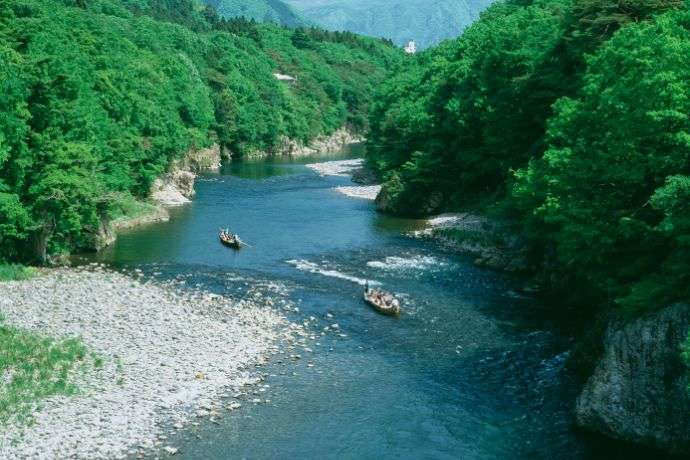
Kinugawa Onsen Ropeway
Kinugawa Onsen Ropeway is located on the northern side of Kinugawa Onsen and is closest to Kinugawa Onsen Sanjo Station. The ropeway quickly climbs 300m to the top of the mountain, where you can see the lovely views from the observation deck and a hot spring shrine. You can regularly see monkeys at the top of the mountain.
Kinugawa Ryuokyo Valley Hiking Trails
The Ryuokyo Valley Hiking Trail is a 6km hike suitable for beginner hikers along the ‘Valley of the Dragon King’ between Kinugawa and Kawaji hot springs. The hike goes along the river, which depending on the time of year, can vary between gentle and raging waters with a wide palette of colours. There are also alternative shorter hiking routes which end back at Ryuokyo Station.
Get started by catching the train from Kinugawa Onsen Station to Ryuokyo Station and then walk back along the pathway, enjoying the seasonal foliage along the way.
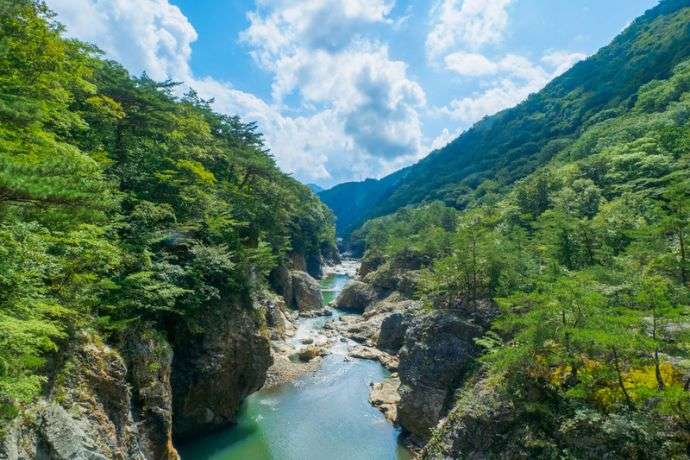
Nikko Edo Wonderland
Edo Wonderland Nikko Edomura is located quite close to the town of Nikko and is a great option for a half to full-day visit. A free bus service departing from Nikko Toshogu Shrine (opposite Tsurukame Daikichi) will take you directly to Edo Wonderland. This service operates about four times per day.
Edo Wonderland takes you back in time to the Edo Period and is a great hands-on way to experience the period. The effort that has been put in to ensure historical accuracy is very impressive.
We definitely recommend that you take the opportunity to dress in period costumes, and it is great to choose whether you want to be a farmer, samurai, lord and many more options! As you walk through the village, your costume inspires interaction from park workers and guests, which is lots of fun.
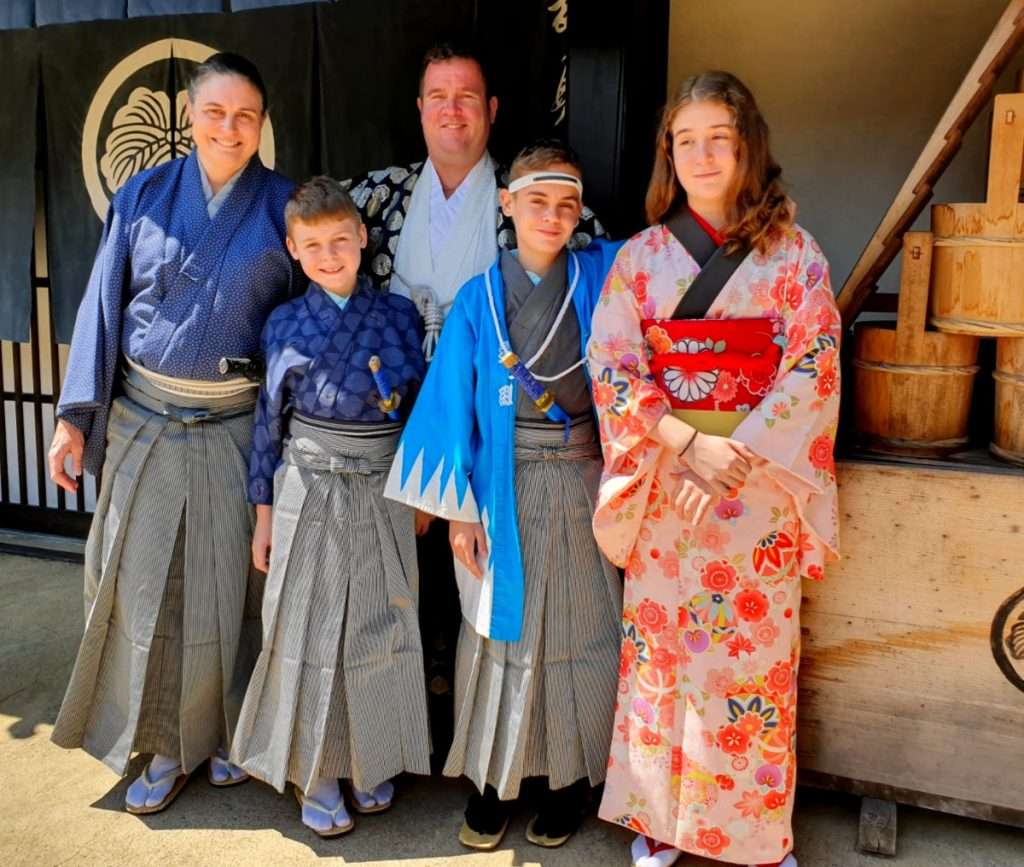
There are many traditional performances to enjoy, including an Oiran courtesan show. It was all in Japanese but we still enjoyed it and it was definitely a comedy act! You can also try your hand at traditional arts and crafts for small additional fees. We really enjoyed cooking our a rice cracker on a brazier, creating our own woodblock pictures as well as learning how to shoot arrows on horseback (simulated..)! Those swords were not just for decoration… We also really enjoyed the ninja show.
Click here to check out and book your Edo Wonderland tickets through Klook
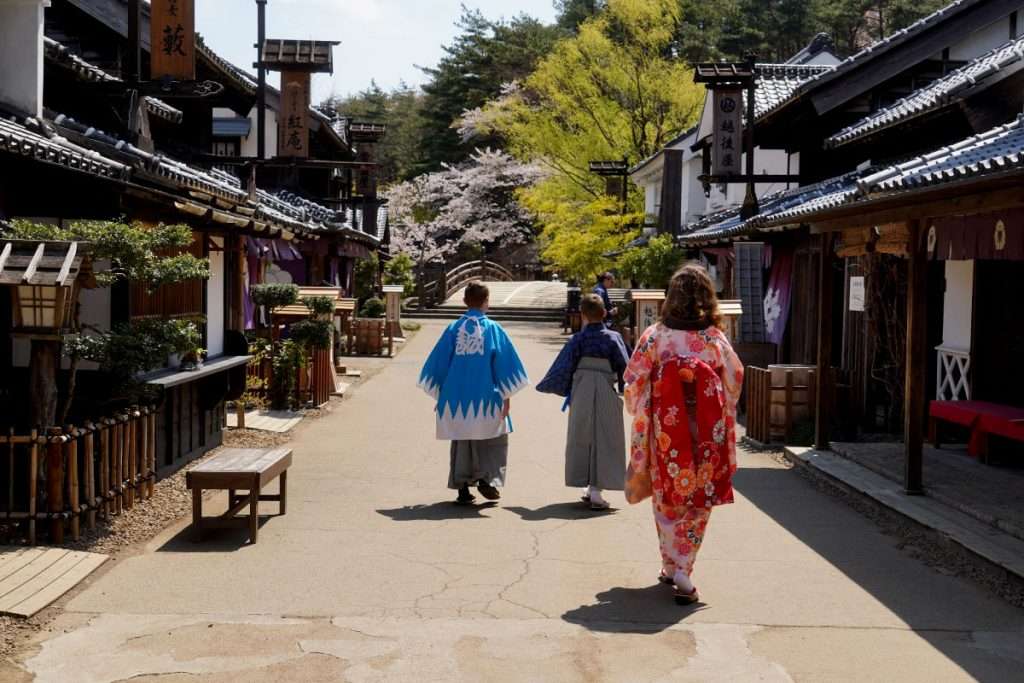
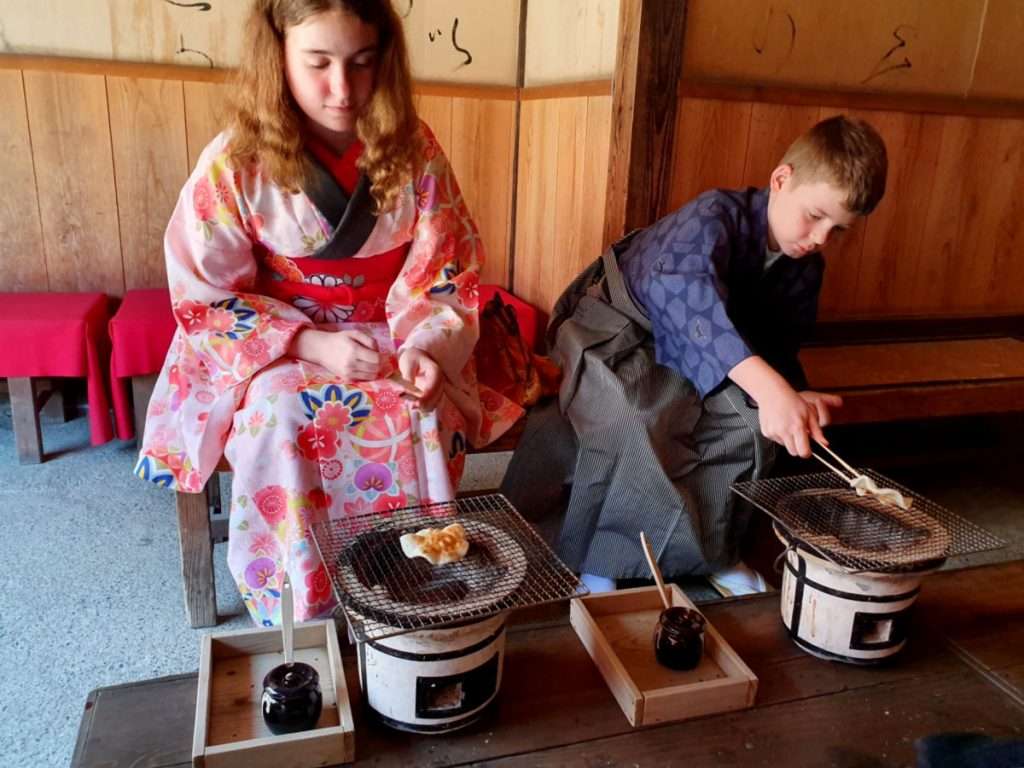
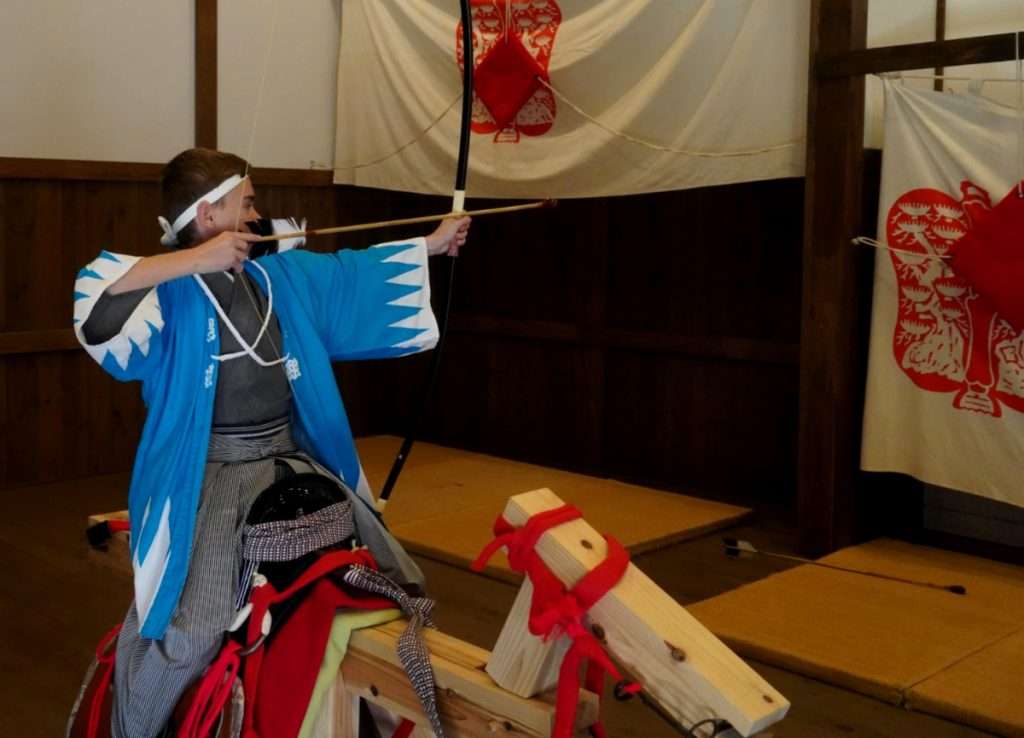
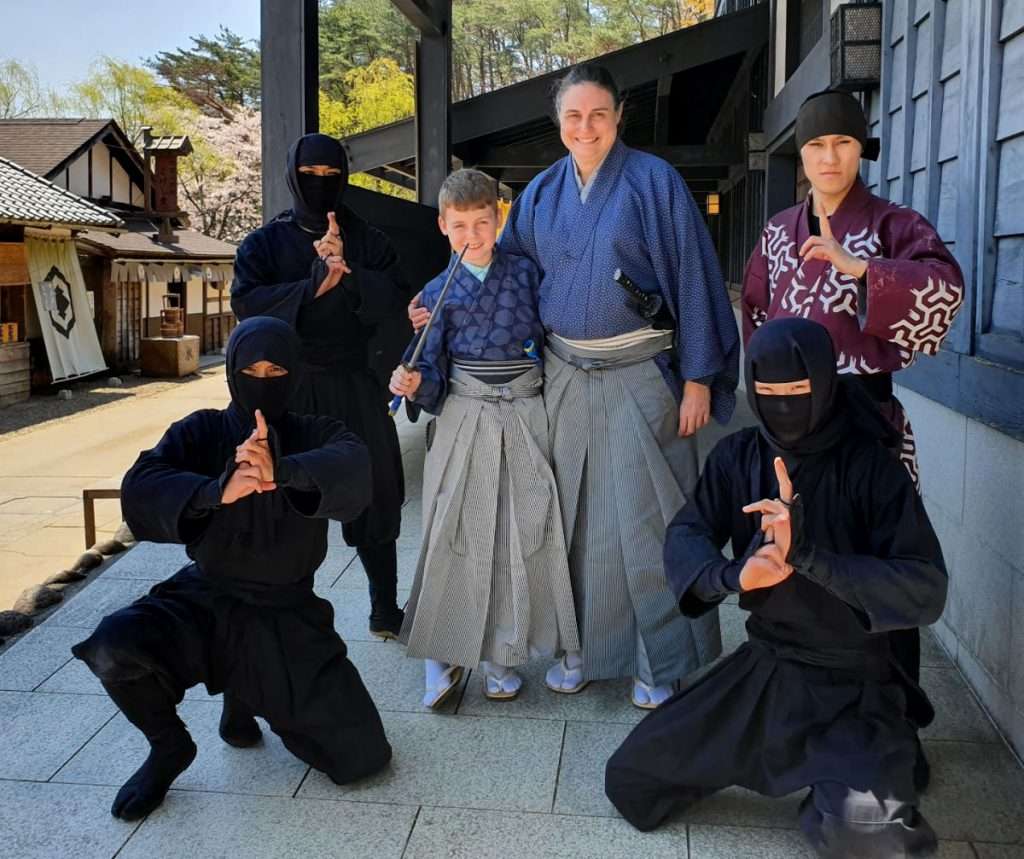
Tobu World Square
For something a bit different, you can easily visit Tobu World Square, a theme park which holds over 100 reproductions of famous buildings and World Heritage Sites. Each model is built on a 1/25th scale. You can get there by either train or bus from Kinugawa Onsen to Tobu World Square Station, which is halfway between Kinugawa Onsen and Edo Wonderland.
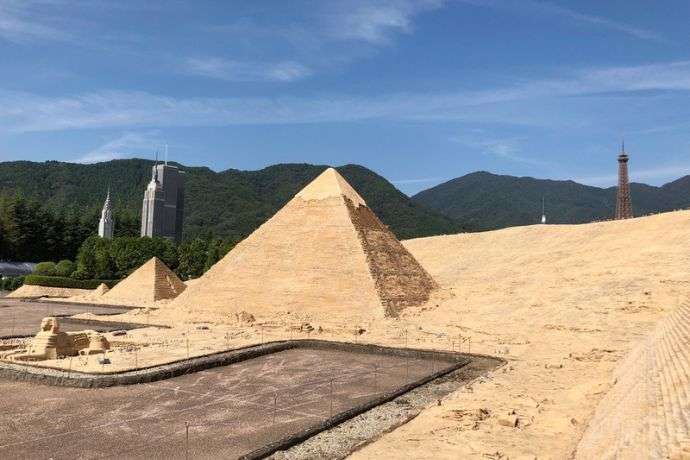
Yunishigawa Onsen
Yunishigawa Onsen is a remote hot spring town which can be accessed by a one-hour bus ride from Kinugawa Onsen.
Yunishigawa Onsen is famous for receiving a lot of snow in the winter, and many tourists visit the annual Yunishigawa Kamakura Festival, held every year from late January to early March. During the festival, hundreds of small snow houses are built and illuminated each evening, and many other activities are available for visitors.
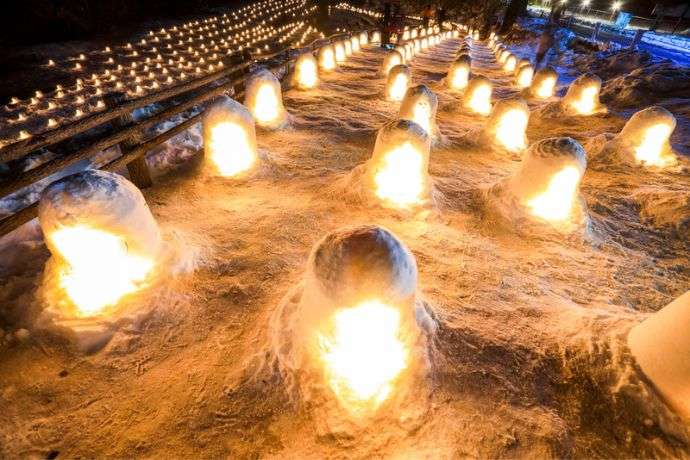
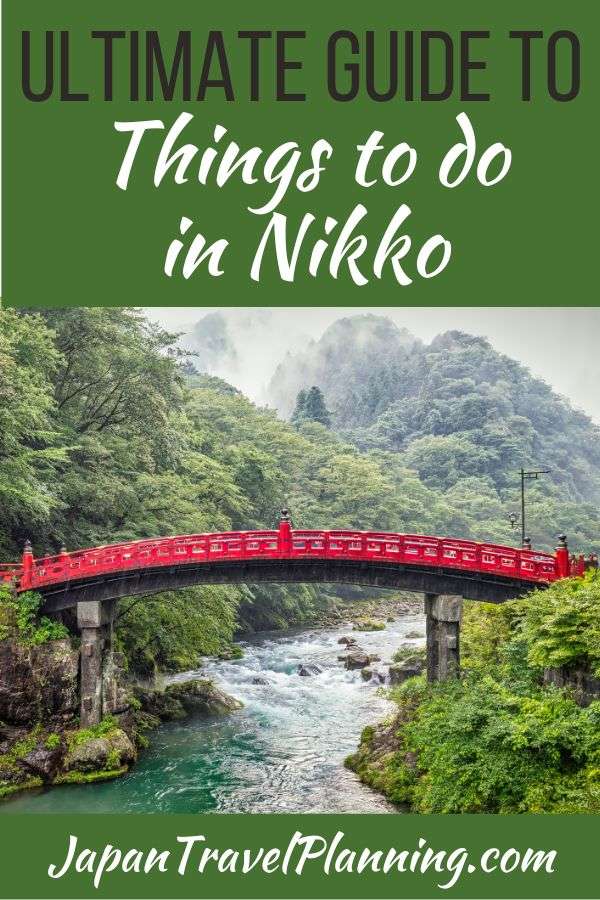
Join the Japan Travel Planning Facebook Group or Discord Server
You are also welcome to join our Japan Travel Planning Facebook Group and our Japan Travel Planning Discord Server – they are great resources to enable you to ask questions about your upcoming trip to Japan!
Disclaimer: This article contains affiliate links. If you book after clicking on one of these links then we may receive a small commission at no extra cost to you.

